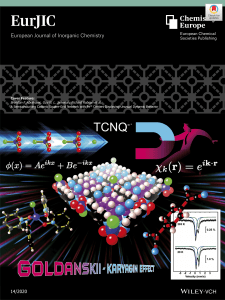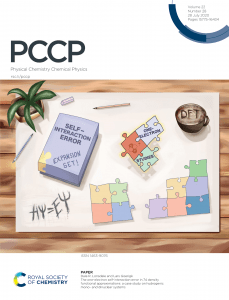Congratulations to Marcos who published his latest contribution to the field of time-dependent range-separated double hybrids for excitation energies in a special issue on 65 Years of Electron Transfer in The Journal of Chemical Physics.
This is the first study that also considers time-dependent PBE-based double hybrids with range-separation for excited states, one of the few that systematically compares the conventional time-dependent DFT scheme with the faster Tamm-Dancoff Approximation for double hybrids, and the first study since 2007 that considers double hybrid performance for technologically relevant triplet excited states. Our previously published ωB2GP-PLYP functional comes out again as one of the most robust an accurate excited-state functionals on the market. Its singlet-state implementation already forms part of ORCA4.2 and our triplet implantation will be part of the next release. The article can be accessed here.
Recently, we shared the news of an article by Dale Lonsdale that had been published in PCCP’s inaugural “Emerging Investigators” and the “2020 Hot Article” Themed Collections. The same article has now also been recognised on the journal’s front cover. The 26-page article is one of the largest investigations of the one-electron self-interaction-error, a puzzling and yet-to-be-solved problem in Density Functional Theory, and can be accessed
here. We would like to thank Nez Novikova for designing the cover image.
Dr Lars Goerigk has joined the inaugural Early Career Advisory Board of Chemical Reviews as one of ten international early and mid-career researchers. The list of all board members can be found in a separate announcement recently made by Chemical Reviews:
As a follow up to last year’s popular trip to the ground-state DFT zoo, we now take non-expert users on a trip to the TD-DFT zoo for excited-state problems. Our account is also the first comprehensive review of time-dependent double-hybrid DFT, a field to which we have contributed over the past years, incl. our last year’s publication of the currently most accurate TD-DFT methods for organic molecules. Our account can be accessed for free here.
We are glad to have been involved in a collaboration on semi-conducting mixed-valent coordination polymers led by the Abrahams group at the School of Chemistry with involvement of the D’Alessandro group at the University of Sydney. The article has just been published in the Journal of Materials Chemistry C and can be found here.
Our recent article on the one-electron self-interaction error that got published as part of PCCP’s inaugural Emerging Investigators Themed Collection, has been included to the journal’s 2020 Hot Article Themed Collection. This demonstrates the importance of Dale Lonsdale’s work to both developers and users of Density Functional Theory methods. The article can be found here.
Congratulations to Dale on his first paper. The article published in Physical Chemistry Chemical Physics (PCCP) deals with a yet-to-be-solved problem in Density Functional Theory (DFT), namely the one-electron selfinteraction error, and is of importance to both DFT users and developers.
The article has been included in PCCP’s inaugural “PCCP Emerging Investigators” Themed Collection and recognises Dr Lars Goerigk as an emerging investigator in the field of Physical Chemistry. The article can be found here.
Read Nisha Mehta’s inspiring story in the University of Melbourne’s newspaper “Pursuit”: https://pursuit.unimelb.edu.au/articles/my-eyesight-is-weak-but-my-vision-is-strong
Our recently published joint article on redox-active coordination polymers has been chosen as the cover feature in Eur. J. Inorg. Chem. The link to the article is here.

Welcome back, Amy Hancock. After a well-deserved break after her successful Masters project, Amy rejoined our group as a PhD student. All the best for your project.

